- Sunday Seminole Summary: FSU Football Adds Pair of WR Transfers
- Sunday Seminole Summary: FSU Football Exits ESD With Top-15 Class
- Sunday Seminole Summary: FSU Soccer Tops BYU for Third National Championship
- Sunday Seminole Summary: FSU Soccer Advances to National Championship Match
- Seminole Sunday Summary: FSU Soccer Heads Back to College Cup
- Seminole Sunday Summary: FSU Soccer Reaches Sweet 16; Football Tops Boston College
- Seminole Sunday Summary: FSU Soccer Wins ACC, Advances to Second Round of NCAA Tournament; FSU Football Rallies Past Miami
- Seminole Sunday Summary: FSU Soccer Tops Wake on OT to Advance to ACC Final
- Seminole Sunday Summary: FSU Football Crushes UMass for Third Straight Win
- Seminole Sunday Summary: FSU Soccer Stays Perfect with Pair of Wins
FSU Football: Benchmarks for the 2018 Season
- By Clint Eiland
- Updated: August 8, 2018
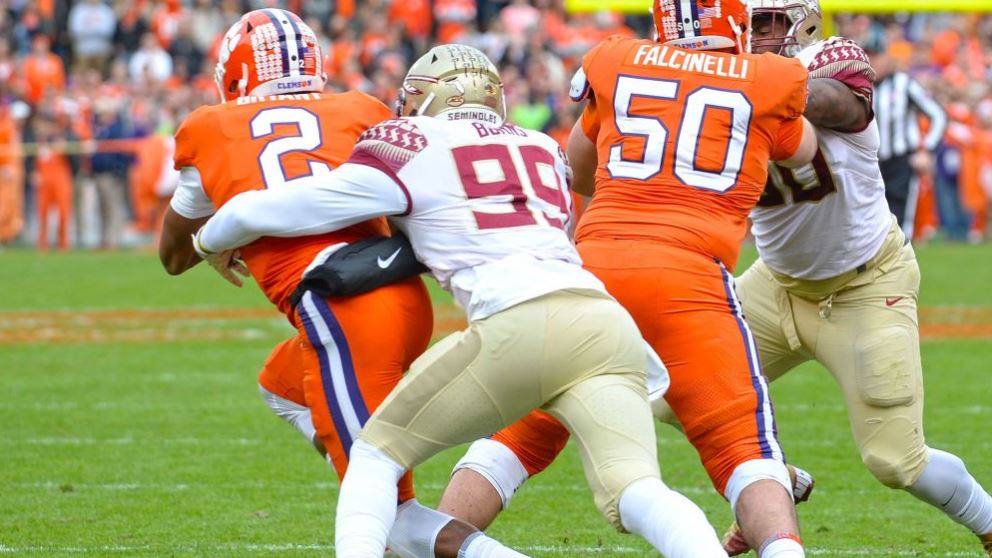 Mitch White/FSU athletics
Mitch White/FSU athleticsPure wins and losses will never tell the full story of a football season, especially not when it’s a first-year head coach with a whole new system. This is the situation that Willie Taggart walks into at Florida State, where expectations for 2018 do not include the usual national contention or even ACC Championship contention. That might even be a good thing for a coach trying to establish himself at a major Power 5 program.
He is not without standards however. FSU remains one of the premier programs of college football, and 7-win seasons won’t give you much job security. Taggart and his staff recognize that Florida State was far from its best version in 2017, and they know there’s plenty of areas where they could improve the team.
Certain benchmarks will provide a good idea of where the program stands. Even if the Seminoles put up an 8-4 record, they could still have a marginally successful season that shows major growth in key areas. We list six of them below.
Offense
Top 30 S&P Offense
Willie Taggart is not walking in to a program like Western Kentucky or South Florida. Florida State may have finished with an abysmal 76th-ranked offense in the S&P ratings for 2017, but it absolutely has the talent to be a top 10 unit, if not top 5.
The problem is the learning curve. No matter how quickly the players pick up “lethal simplicity”, there’s still going to be growing pains thanks to trial and error. If everything goes right for the Seminoles, they could indeed live up to the potential and blow past expectations. But for now? That bar should be set at a top 30 offense.
For reference, Oregon managed a 32nd-ranked offense in Taggart’s first year — even with starting quarterback Justin Herbert out for half the season. Much of Taggart’s offensive success relies on finding mismatches and hammering them to their fullest extent, which means it helps to have the players who can create those mismatches. Florida State certainly does.
Top 20 S&P Rushing Offense
The Florida State backfield has an embarrassment of riches, which includes an 1,000-yard rusher from 2017, a 1,400-plus career yards rusher, and a former 5-star recruit. Whereas wide receiver will almost certainly have multiple freshmen contributing, the running back room will be too crowded for that to occur. Now all three of those backs are in an offense built to give them as many carries as they can handle.
The run game should be the main strength of the offense in 2018. If Taggart utilizes the diverse talent properly, there’s no reason FSU won’t finish in the top 20 of the S&P run offense rankings. Last year the Seminoles managed 32nd overall despite offensive line troubles and inconsistent help from the quarterback.
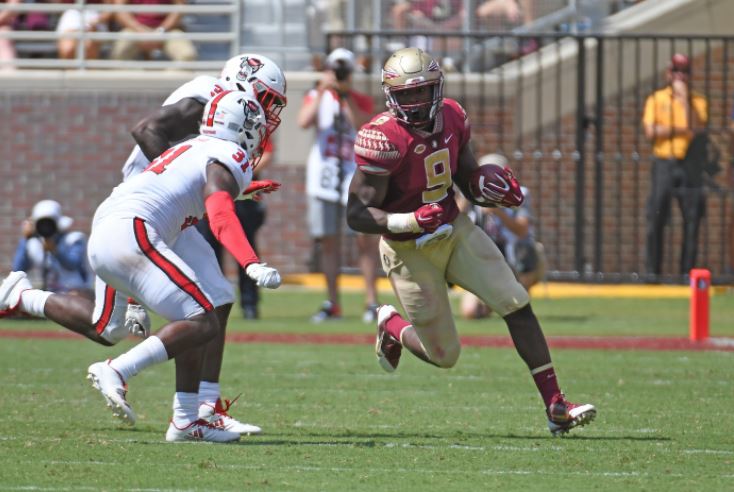
Jacques Patrick has more than 1,400 career rushing yards entering 2018. (Phil Kelly/FSU athletics)
Uncertainty at the receiver position and offensive line also mean that the passing S&P ranking is a bit hard to pin down. A consistent theme from Pro Football Focus was that Florida State’s run-blocking was above average; it was the pass-blocking that suffered. Ultimately, it will be hard to set expectations for the passing offense in the first year.
Don’t Go Conservative
This is not advocating to blow out teams by 50-plus points. But how many games were unusually close, all because the offense went conservative after going up by a small margin? Taggart and offensive coordinator Walt Bell would gain some serious goodwill if they treated expected blowouts like expected blowouts. Part of the change involves response from the players as well, which seemed to wane throughout Jimbo Fisher’s tenure. Everyone needs to be on the same page and committed to playing the full four quarters.
Defense
Top 15 S&P Defense
Despite losing more contributors than on offense, Florida State’s defense might have loftier benchmarks to meet. That’s largely because it has more highly-regarded players and veritable superstars returning in cornerback Levonta Taylor and defensive end Brian Burns. The main criticism levied at former defensive coordinator Charles Kelly was that he never got the most out of his players, even if his defenses did routinely finish among the top 30 defenses.
Now defensive coordinator Harlon Barnett is tasked with capitalizing on that talent. His Michigan State days suggest that he could do an excellent job even if he didn’t have the best resources to draw from. Now he has all he could want and more at Florida State. With a system that partly relies on cornerbacks being left on islands, Barnett will look to the multiple elite players to help him implement it.
Usually FSU should be finishing top 10 in the overall defense rankings. But the same principle with the offense applies to the defense: it’s the first year of a brand new coach against a number of opponents who boast impressive challenges. There will be glitches throughout the year. Despite this, the Seminoles should be ending up in the top 15 of the S&P rankings.
More Sacks
Since 2010, the two worst FSU defenses were the 2014 and the 2017 iterations. Coincidentally, those were also the two teams that recorded the lowest sack totals in the same time frame. FSU managed just 29 sacks in 2017 after an impressive 51 sacks in 2016. Losing DeMarcus Walker was an obvious reason for decline, but the fact that FSU couldn’t produce more with Josh Sweat and Brian Burns was shocking.
It’s a bit of a chicken or the egg question, but it’s also clear that the Seminoles have too many options on the defensive line to struggle with getting to the quarterback. They should be aiming for around 35 sacks this time around, which would have tied for 25th in the nation using 2017 results.
No Collapses
Collapsing does not have to happen over the full game. A defense can hold their own for almost an entire contest, only to stumble at the moment it couldn’t afford to. See last season’s 24-20 loss to Miami for an example of this phenomenon.
The benchmark is twofold: FSU should not be getting blown out by any of the offenses it plays, and it should not be melting down on the final drive of a 1-score game. Watching FSU fall to North Carolina in 2016 and Miami in 2017, one could jarringly see wide open receivers near the end of the contest. Getting beat by great plays from superb players is one thing. Getting beat thanks to coverage breakdowns is another.
No serious analyst is expecting an undefeated season. Heck, no serious fan is either. What is expected is improvement in the areas that led to six losses. Taggart and company do not have to meet every single one of these benchmarks to have a successful season. However, after looking over the list, it’s hard to imagine much success without doing so.
Related Posts
One Comment
You must be logged in to post a comment Login
Leave a Reply
Cancel reply
You must be logged in to post a comment.

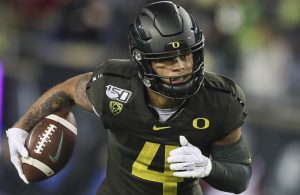
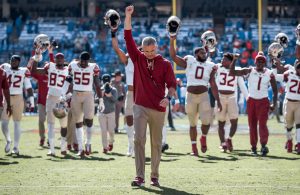
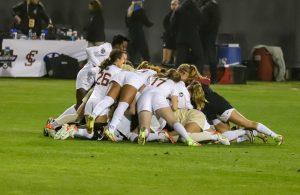
finance85
August 9, 2018 at 11:16 am
I’d set my goal higher than top 30 on offense. I don’t buy the notion the O-Line has been a problem, or the learning curve is steep. We saw what this talent could do when Odell and Sanders simplified the old offense after Jimbo left. The problem with the O-line has always been the scheme, or in some cases multiple schemes from play-to-play. Jimbo was too egotistical and stubborn to realize that. The learning curve is way higher when going from simple to complex, not the other way around. I think top 20 on offense is realistic.